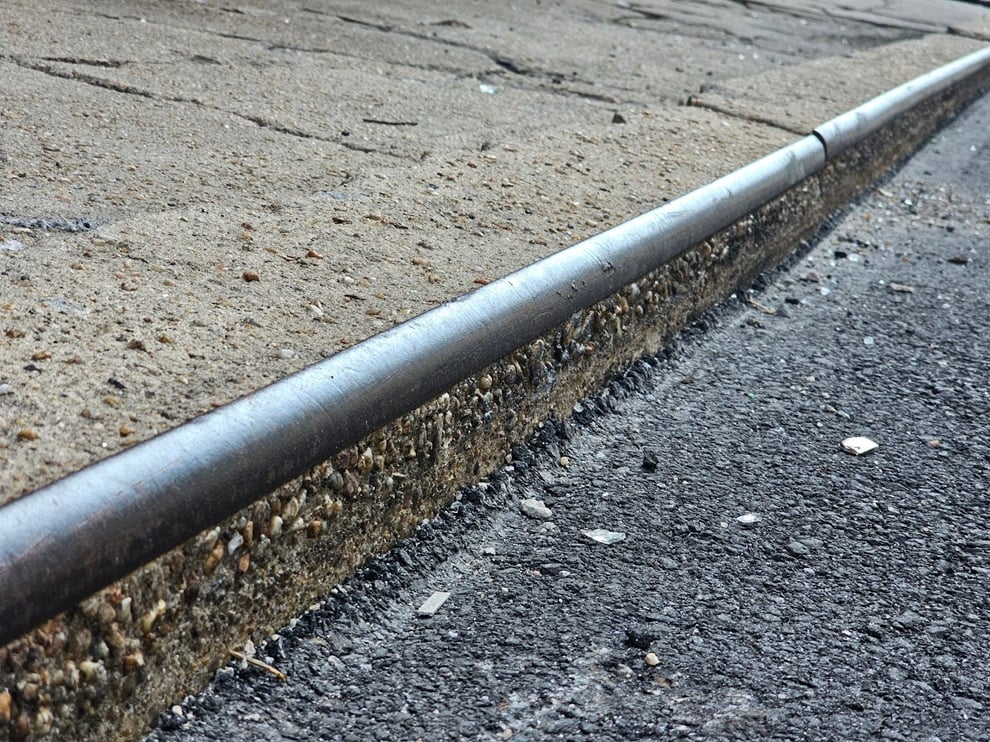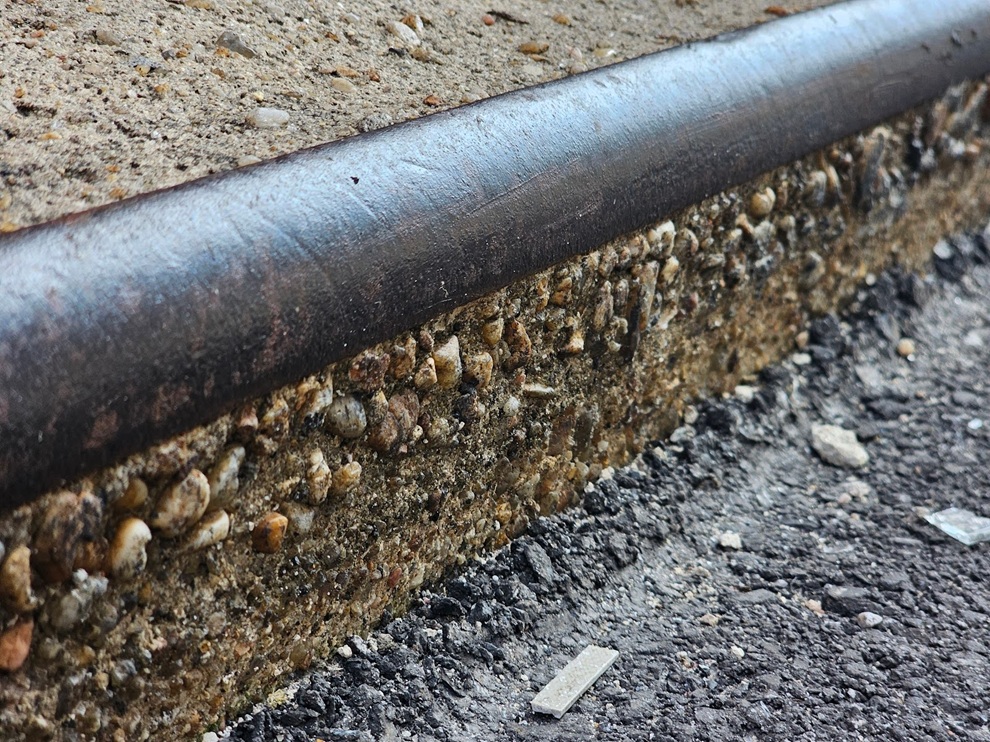Durable Steel Nosings at Concrete Treads and Curbs – Part I
Most often, here on our website and in our company’s work, we are looking at concerns related to masonry restoration. Particularly, those areas generally include repointing and tuckpointing, masonry restoration, upkeep, care and maintenance of historic brick mortar. Today though we’re looking at something similar yet different. Often, in concrete curbs and stairways, steel reinforcements may be used to protect the upper front or leading edge from wear, breakage and or damage from impact.
We’ve referred to these particular nosings as made from steel, as is the case in the one that we’re looking at today. However, nosings can also be made from other materials such as wrought iron or cast iron. Wrought iron is very uncommon because it hasn’t been used in mass production type supply channels for many decades. Cast iron is common though because a unique characteristic of cast iron, is that it can be easily created with a texture to add traction for stair nosing.
Traction, particularly at stair nursing, can help prevent the risk of slippage. That’s particularly important when the stairs are wet and or when there’s precipitation around freezing temperatures which can lead to ice and extremely slippery conditions.
The picture below shows an example of a radius nosing at the top edge of a curb. As we noted, this particular one is made from steel and has no coating or protective covering applied to prevent the steel from oxidation, yet because of regular wear it maintains a relatively clean and oxidation free surface.

When you look closely, you can see a few import important details, right at the surface of the concrete curb and the steel nosing. You may notice that the surface of the concrete shows a high amount of exposed aggregate. This exposed aggregate is relatively small and in a wide range of color and size. In some cases, aggregate is intentionally exposed by washing off the cream layer at the surface of concrete before it is fully cured.
In this case though the exposed aggregate is a result of aging, not intentional aesthetic surface or texture treatments related to washing at the rime of installation This wear and aging is an important detail to notice when you’re analyzing the condition or quality of concrete as it relates to upkeep and maintenance because understanding the age will give you a sense of where that concrete is on the life cycle curve. That has impacts related to cost of upkeep and maintenance and future planning.

You may also notice that the steel is deeply embedded into this concrete at all angles or edges around the steel, at the top and bottom of the linear nosing. It almost looks like a tube. In this coming week’s blog article, we will show additional angles of other parts of this same area of concrete walkway though where it has been significantly damaged. From those different angles, you essentially get a look inside of a concrete to see what’s behind the surface. At that point or from that angle, it’s very clear that this is not an actual tube, it’s just a nosing at the surface with a connecting web on the inside of the concrete.
The picture below shows that different section, adjacent to the area of the pictures above, and part of the exact same walkway and curb area, but here, as shown in the picture below, this particular section has been significantly damaged. There are a multitude of different ways that concrete can be damaged, both from impact and or exposure to chemicals or adverse conditions.
Many building materials are extremely susceptible to exposure to ultraviolet rays. In some cases, the common or ubiquitous ultraviolet light that is in our sunlight, can cause significant damage and accelerate the deterioration of many different types of building materials. Some of the most susceptible tight materials are polymers and plastics, particularly where used in exterior applications.
Most of the deterioration that we’re talking about, related to exposure to UV, doesn’t significantly apply to interior elements because most modern windows at least have treatments or integral type elements that reduce the damage from the UV in outdoor light from the sun. In most cases though, even though these other materials are highly susceptible at the exterior buildings, the UV exposure doesn’t really affect or significantly affect concrete, mortar, brick, and cementitious type elements.

Our company, Dupont Tuckpointing and Masonry, specializes in masonry restoration, historic brick repointing, and tuckpointing services in the Washington D.C. area. These buildings are uniquely historic, and their preservation requires skilled masons who are technically trained in the best practices and knowledge of proper restoration techniques.
We understand the significance of maintaining the architectural integrity of these historic structures, and our team of experienced professionals is dedicated to delivering exceptional craftsmanship. Whether you require masonry restoration, tuckpointing, or brick repointing services, we are here to help.
At Dupont Tuckpointing and Masonry, we take pride in our work and strive to ensure that every project is executed with the utmost care and attention to detail. We are committed to preserving the rich heritage of Washington D.C.’s built environment for generations to come.
If you have any questions or needs regarding masonry restoration, historic brick repointing, or tuckpointing services, please do not hesitate to reach out to us. We would be delighted to assist you and provide you with the expertise and quality workmanship that your historic property deserves.
You can reach us by telephone at (202) 796-7644 and you can reach us by email from the contact form on our website at https://duponttuckpointingmasonrydc.com/contact-us/.




